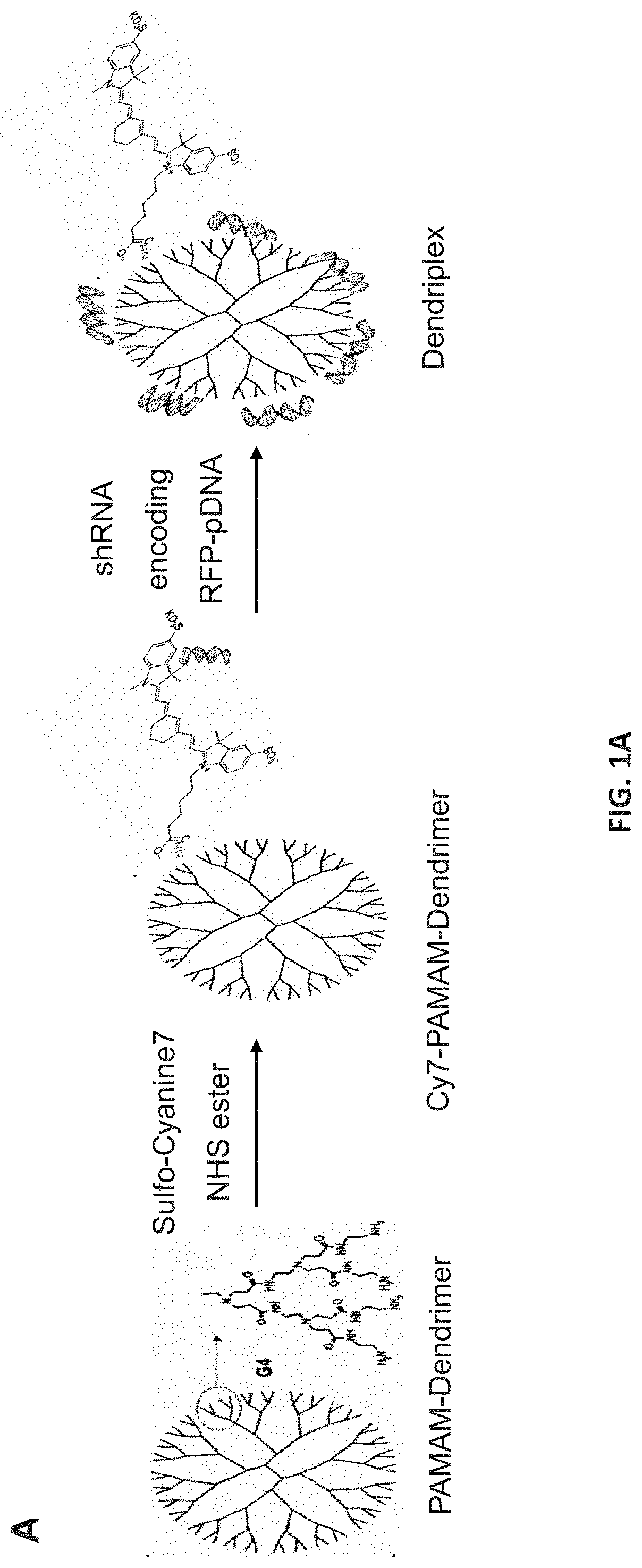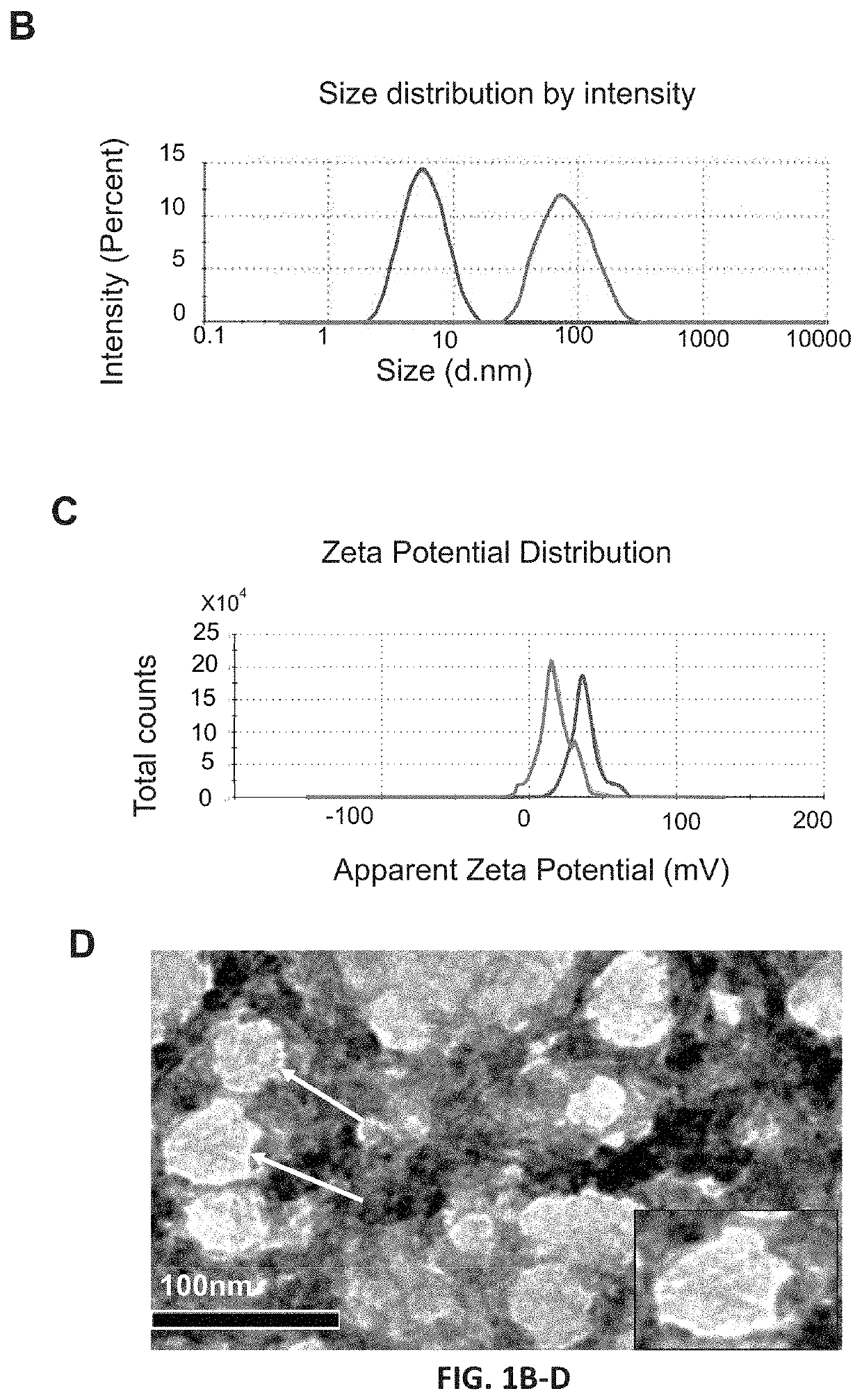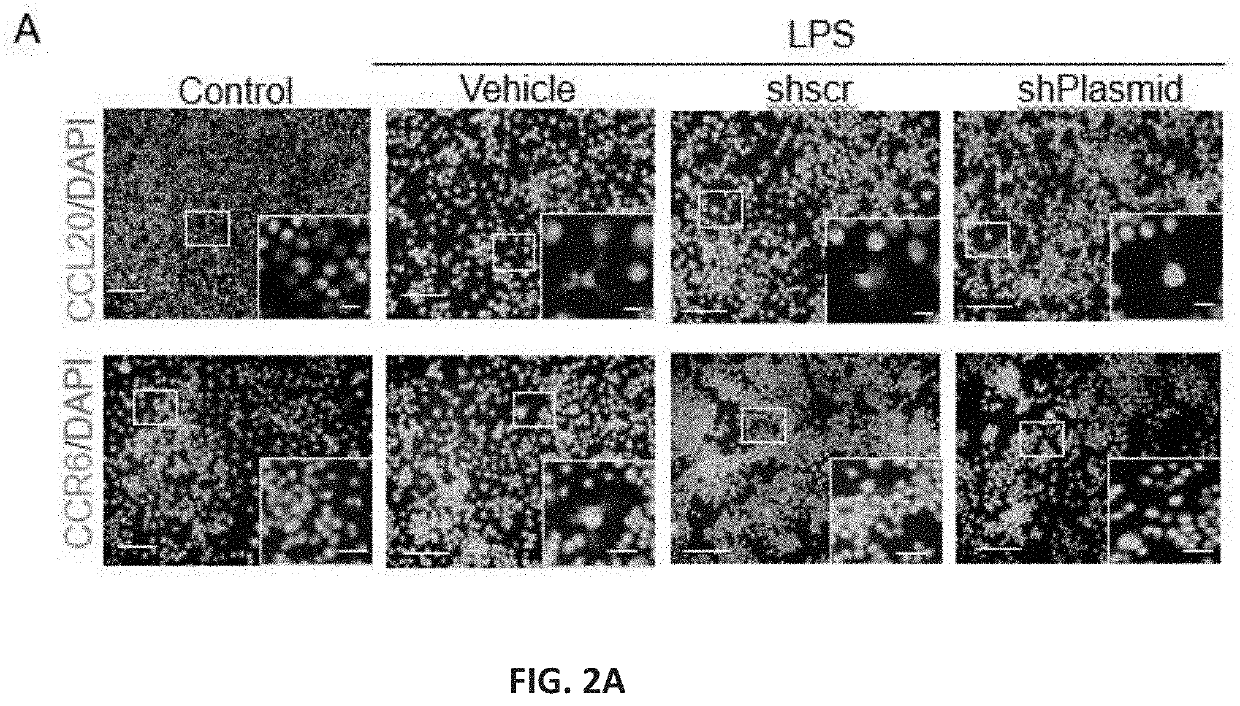Methods of downregulating ccl20 genes for treatment of traumatic brain injuries
a technology gene regulation, applied in the field of traumatic brain injury treatment, can solve the problems of single therapy which can effectively address the problem, and achieve the effect of reducing anxiety and increasing brain derived neurotrophic factor (bdnf)
- Summary
- Abstract
- Description
- Claims
- Application Information
AI Technical Summary
Benefits of technology
Problems solved by technology
Method used
Image
Examples
example 1
ION OF CCL20 / CCR6 shRNA EXPRESSION VECTOR
[0063]The shRNA target sequence for knocking down CCL20 and CCR6 was constructed using wizard 3.1 software from Invivogen (San Diego, USA). The mammalian multiple miR30-shRNA knockdown vectors for downregulating CCL20 or CCR6 were purchased from Vector Builder (VectorBuilder Inc, Chicago, USA). Each vector is encoded with 4 inserts of shRNA (CCL20 or CCR6) sequence with (pRP[miR30-shRNA]-Neo-CMV>TurboRFP) CMV promoter, turbo RFP reporter and ampicillin as selectable marker gene. Similarly, a control plasmid with four scramble sequences was also constructed with a similar vector backbone. The plasmids were cloned and amplified in DH5alpha competent cells. The plasmids for carrying out the in vitro and in vivo studies were isolated using a mega preparation plasmid isolation kit from Qiagen (Maryland, USA).
example 2
X PREPARATION, pDNA CONJUGATION AND CHARACTERIZATION
[0064]Polyamidoamine (PAMAM) dendrimer, generation 4 (14215 MW) with 64 surface amine groups, was purchased from Dendritech Inc. (Midland, Mich., USA). The average hydrodynamic diameter of the dendrimer was 40 nm with two different peaks at 5 and 100 nm. In order to reduce the size and polydispersity index of the dendrimer stock, the sample was subjected to 3 consecutive cycles of extrusion through polycarbonate membranes of different pore-sizes (200 nm, 100 nm and 50 nm). The average size of the final sample was 5 nm with 0.150 polydispersity index.
[0065]Cy-7 labeled dendrimer was prepared through one step reaction as described previously (FIG. 2A) [24, 25]. Briefly, 5 mg of amino-terminated PAMAM dendrimer reacted with 125 m of sulfo-Cyanine 7 NHS ester in 2 ml distilled water overnight at 4° C. The non-conjugated dye was removed by dialysis against pure DI water (membrane MWCO=2 kDa) for 24 h.
[0066]PAMAM dendrimer and TurboRFP-p...
example 4
TUDIES
[0072]Animal Experiments
[0073]All animal procedures were conducted in accordance with the NIH guidelines for the Care and Use of Laboratory Animals and approved by the Institutional Animal Care and Use Committee of the University of South Florida. Male C57BL / 6 mice 14-16 weeks old were housed in the animal facility on a 12 h light-12 h dark cycle with food and water available ad libitum.
[0074]Male C57BL / 6 mice were anesthetized with continuous flow of a mixture of 2% of isoflurane. A closed head rTBI was induced, as described [21]. Briefly, using a controlled cortical impactor with a tip diameter of 5 mm, a velocity of 5 m / s, impact depth of 1.5 mm and 200 ms dwell time, five hits were delivered with 48 h between hits, i.e. injuries were experienced on days 0, 2, 4, 6 and 8. Animals were allowed to survive in their home cage for 7 days after the final TBI. Either Cy7 labeled-tdTomato conjugated or shRNA (shCCL20 / shCCR6 or combo) conjugated dendrimers were administered simultan...
PUM
| Property | Measurement | Unit |
|---|---|---|
| Size | aaaaa | aaaaa |
| Therapeutic | aaaaa | aaaaa |
Abstract
Description
Claims
Application Information
 Login to View More
Login to View More - R&D
- Intellectual Property
- Life Sciences
- Materials
- Tech Scout
- Unparalleled Data Quality
- Higher Quality Content
- 60% Fewer Hallucinations
Browse by: Latest US Patents, China's latest patents, Technical Efficacy Thesaurus, Application Domain, Technology Topic, Popular Technical Reports.
© 2025 PatSnap. All rights reserved.Legal|Privacy policy|Modern Slavery Act Transparency Statement|Sitemap|About US| Contact US: help@patsnap.com



